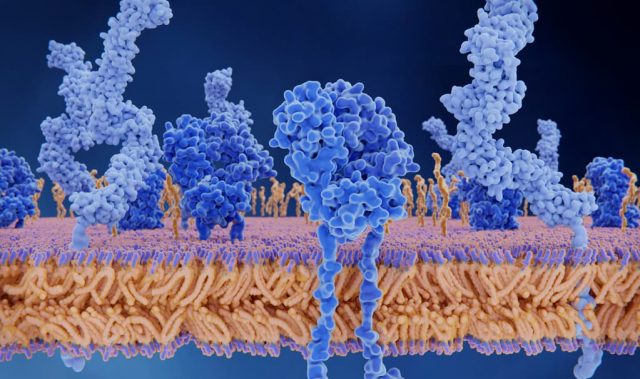
AsianScientist (Sep. 2, 2016) – Irregularities to the protein-rich compartments in neurons may contribute to various brain disorders like autism and seizure, according to a study from Hong Kong published in the journal Cell.
The neurons in our brain communicate with each other via a micron-sized unit called a synapse. Each synapse contains a layer of densely-packed, protein-rich compartments called postsynaptic density (PSD), which are responsible for brain signal processing and transmission. Mutations of the genes encoding PSD proteins SynGAP and PSD-95 are major causes of psychiatric disorders including autism, schizophrenia, and intellectual disabilities.
While the existence of PSDs has been known to scientists for 60 years, how PSDs form and change in response to brain activities are poorly understood. Interestingly, the researchers from Hong Kong University Science and Technology have found that SynGAP and PSD-95 can form an autonomously assembled network ‘oil-like’ structure in living cells, via a phenomenon called phase-transition.
“Everyone has seen phase transition in our daily life. Liquid water turning into ice is a form of phase transition. Living cells can selectively ‘pick’ certain proteins or nucleic acids to undergo phase transition forming a non-membrane-enclosed cellular compartments, so their physiological functions can be regulated,” said Professor Zhang Mingjie, who led the research group.
Importantly, the research team also found that defects of SynGAP or PSD-95 identified in autism patients alter the ‘oil-like’ droplets formation of the complex and change the synaptic signaling activity of neurons. This discovery may provide insights into how defects in SynGAP and PSD-95 cause various brain disorders like autism and seizure.
“This study is only the beginning of teasing out how other proteins collectively contribute to the formation and brain activity-dependent alterations of PSD,” said PhD student Zeng Menglong, the first author of the study.
“We are also interested in trying to find out whether other synapses, the neuron/muscle connections for an example, also adopt the phase-transition strategy to build their PSDs.”
The article can be found at: Zeng et al. (2016) Phase Transition in Postsynaptic Densities Underlies Formation of Synaptic Complexes and Synaptic Plasticity.
———
Source: Hong Kong University of Science and Technology.
Disclaimer: This article does not necessarily reflect the views of AsianScientist or its staff.












